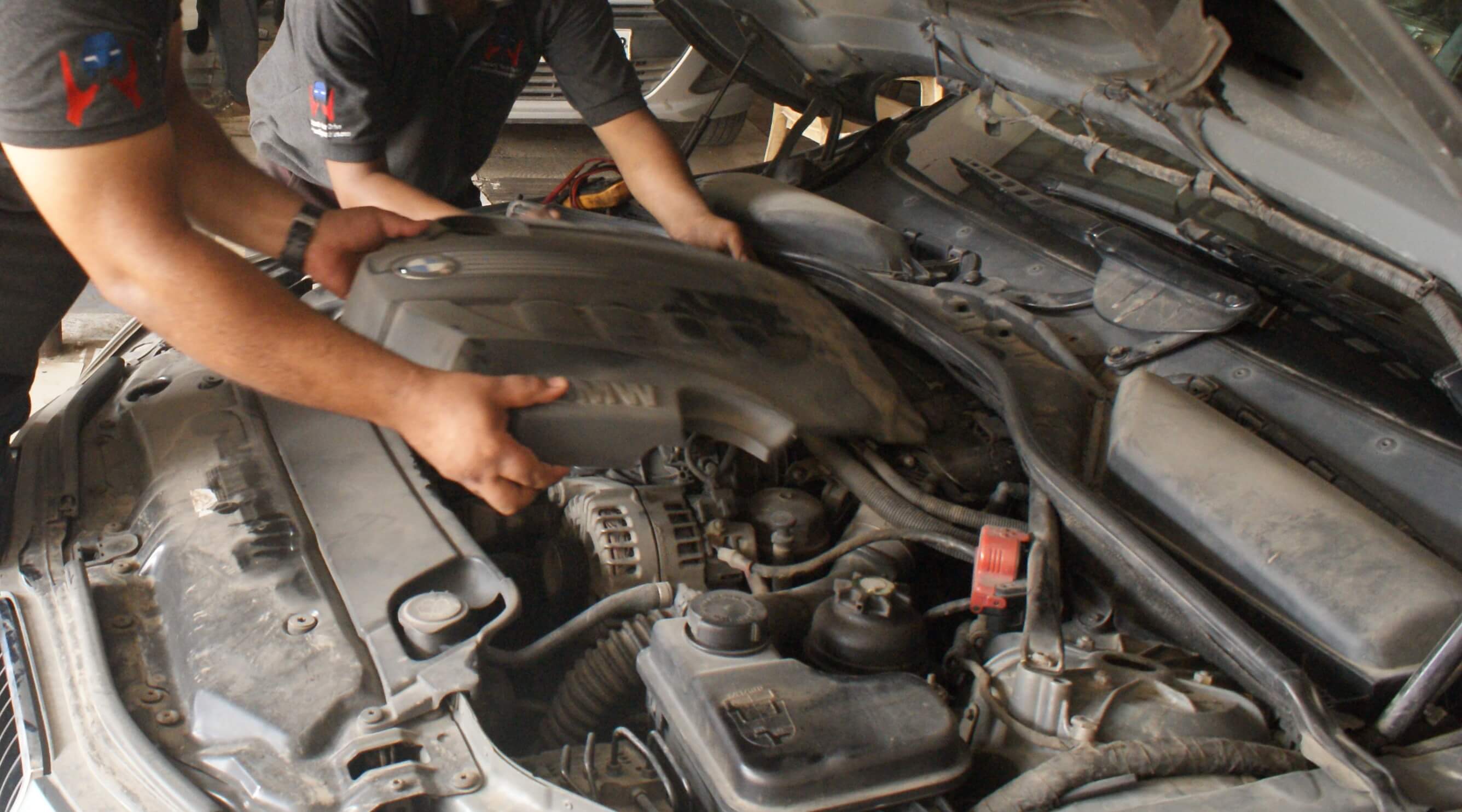When to Replace Your Brakes: A Guide for Car Owners?

As a car owner, one of the most important maintenance tasks you can perform is to keep your brakes in good working condition. Your brakes are your car’s most critical safety system, and if they fail, it can lead to an accident. Therefore, it’s important to know when to replace your brakes and how to maintain them.
In this guide, we’ll discuss the signs that indicate it’s time to replace your brakes and the steps you can take to keep them in good condition. Read the article below to know if you need car repair and maintenance.
Signs It’s Time to Replace Your Brakes
The following are signs that indicate it’s time to replace your brakes:
Squeaking or Grinding Noise
If you hear a high-pitch squeaking or grinding noise when you apply your brakes, it could be a sign that your brake pads are worn out. Brake pads are designed to wear down over time and will eventually need to be replaced. If you ignore this noise, it can lead to further damage to your brakes, including damaging your rotors, which can be an expensive repair.
Vibration in the Brake Pedal
If you feel a vibration in the brake pedal when you apply your brakes, it could be a sign that your brake rotors are warp. Brake rotors are the metal discs that your brake pads press against to slow down your car. Over time, they can become warped due to heat and wear and tear, leading to a vibration in the brake pedal.
Longer Stopping Distance
If you notice that it’s taking longer for your car to come to a stop than it used to, it could be a sign that your brake pads are worn out. When your brake pads are worn, it takes longer for your car to come to a stop, which can be dangerous in emergency situations.
Warning Light
Most modern cars are equip with a warning light that will illuminate on your dashboard when there’s an issue with your brakes. If you see this warning light, it’s important to have your brakes inspected by a professional mechanic as soon as possible.
Visible Wear on Brake Pads
If you’re able to visually inspect your brake pads, and you notice that they’re worn down to less than 1/4 inch, it’s time to replace them. If you continue to drive with worn brake pads, it can lead to further damage to your brakes and rotors.
Steps to Maintain Your Brakes
To keep your brakes in good condition and extend their lifespan, there are a few simple steps you can take:
-
Keep Your Brake System Clean
Dirt and debris can accumulate on your brake pads and rotors, which can lead to increased wear and tear. To prevent this, make sure to clean your brake system regularly. You can use a brake cleaner or a degreaser to remove any dirt or debris from your brake pads and rotors.
-
Use Your Brakes Properly
Your driving habits can have a significant impact on the lifespan of your brakes. To extend their lifespan, try to avoid sudden stops and heavy braking. This will put less stress on your brake pads and rotors and help them last longer.
-
Inspect Your Brakes Regularly
One of the best ways to prevent brake problems is to inspect your brakes regularly. You can do this visually by looking at your brake pads and rotors or by listening for any unusual noises. If you notice any signs of wear or damage, it’s important to have your brakes inspected by a professional mechanic.
-
Replace Your Brake Fluid
Brake fluid is an essential component of your brake system. It helps to transfer the force from your brake pedal to your brakes. Over time, brake fluid can become contaminated with moisture and other contaminants, which can lead to brake failure. To prevent this, it’s important to have your brake
-
Replace Your Brakes as Needed
As we discussed earlier, there are several signs that indicate it’s time to replace your brakes. If you notice any of these signs, it’s important to have your brakes replaced as soon as possible to ensure your safety on the road. It’s also important to follow your car manufacturer’s recommendations for brake replacement intervals.
Your brakes are your car’s most critical safety system, and it’s important to keep them in good condition to ensure your safety on the road. By being aware of the signs that indicate it’s time to replace your brakes and taking steps to maintain them, you can extend their lifespan and avoid costly repairs.
If you’re not sure whether it’s time to replace your brakes, or if you have any other concerns about your car’s brakes, it’s always best to have them inspected by a professional mechanic. They can assess the condition of your brakes and recommend any necessary repairs or replacements to keep you and your passengers safe on the road.
Brake maintenance
Brake maintenance and replacement can vary depending on your driving habits and the type of brake system in your car. For example, if you frequently drive in stop-and-go traffic, your brakes may wear out more quickly than someone who primarily drives on open highways. Similarly, different types of brake systems, such as drum brakes versus disc brakes, may require different maintenance and replacement intervals.
It’s also important to note that brake replacement can be an expensive repair. However, it’s always better to address brake problems early on to avoid further damage to your brake system, which can lead to even more costly repairs down the line. Additionally, neglecting to replace your brakes when needed can put you and your passengers at risk of an accident.
If you’re on a tight budget, there are some steps you can take to save money on brake replacement. One option is to purchase and install brake pads yourself. However, if you’re not experience with car repairs, it’s always best to have your brakes replace by a professional mechanic to ensure the job is done correctly and safely.
Another option is to purchase aftermarket brake pads, which can be less expensive than OEM (original equipment manufacturer) parts. However, it’s important to research the quality of the aftermarket brake pads you’re considering and make sure they meet the safety standards required for your car.
In some cases, it may also be possible to resurface your brake rotors instead of replacing them. Resurfacing involves removing a thin layer of metal from the rotor’s surface to restore a smooth, even braking surface. This can be a cost-effective option if your rotors are not significantly worn or damaged.
Conclusion
It is important to be aware of the signs that indicate it’s time to replace your brakes and to take steps to maintain them to extend their lifespan. Regular brake maintenance and inspection can also help you catch any issues early on and avoid more costly repairs down the line. And if you’re not sure whether it’s time to replace your brakes or have any concerns about your brake system, it’s always best to consult with a professional mechanic. By prioritizing brake safety, you can ensure your own safety and the safety of those around you on the road. So, regularly opt for car care service.



